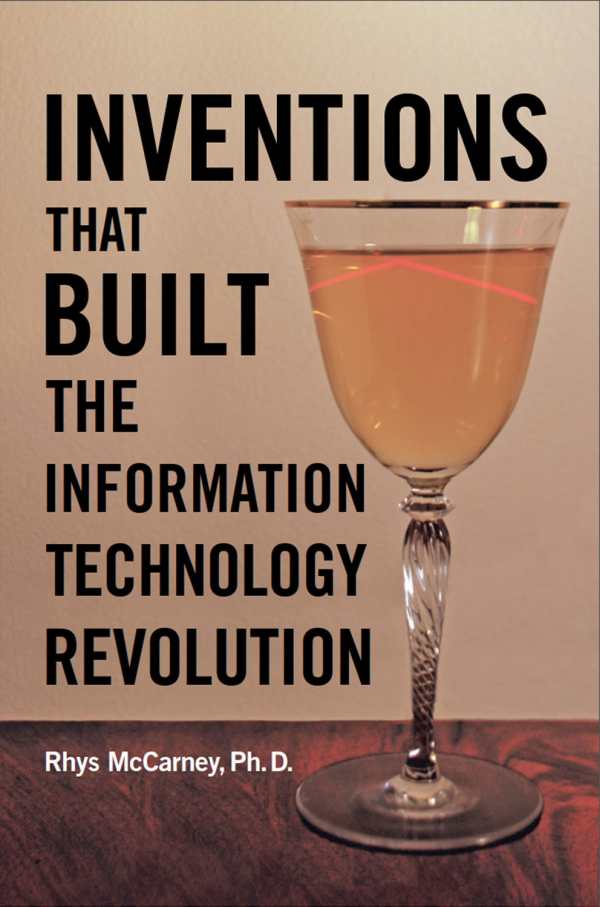
Inventions that Built the Information Technology Revolution
Inventions that Built the Information Technology Revolution is an insightful look at the technological underpinnings of the modern world, and a realistic, no-holds-barred accounting of who’s benefited and who’s been shortchanged.
Rhys McCarney’s Inventions that Built the Information Technology Revolution chronicles how computers and the internet changed society and the world of business, as well as who profited and who didn’t.
This historical account charts how physicists researching optics and semiconductors laid the groundwork for the internet, broadband, computers, and mobile devices that have come to define the contemporary world. It also shows how Microsoft and other software makers capitalized heavily off of their technological predecessors’ work, creating unprecedented levels of wealth, and accounting for a full seven percent of the US gross domestic product and vastly more jobs. There’s a personal element here: McCarney holds more than sixty patents, the windfalls from which were life-changing, but which are nothing compared to the riches that the software developers who relied on his work can boast.
Blue-chip hardware makers have largely faded, the book shows, while five technology companies specializing in software, internet, or social media now comprise a whopping twelve percent of market capitalization of all US publicly traded companies.
The book becomes an inquiry into how software makers reaped vastly bigger fortunes than the hardware creators who made it all possible. It thoroughly drives home its points, including with an extensive quiz that asks readers to guess how much various inventors earned for creating DARPA, the fiber-optic wire, and the integrated circuit as compared to Snapchat, Facebook, and other wildly successful tech enterprises that expanded upon the infrastructure of earlier innovations.
The writing is smart, lively, and accessible. The book often takes a conversational tone, sounding like a seasoned insider explaining to a curious party guest how things really work.
The book elucidates how the US patent system heavily favors corporate interests over the brilliance of individual researchers to the point where “royalties are never paid” on patent license fees. It charts how it became harder for independent creators to reap the rewards of their inventions, and lays out how hardware enterprises were risky, capital-intensive enterprises, while software development is low-risk and requires little capital—in fact, little more than a laptop.
The work can at times be heavy-handed, repeating the same points again and again without drawing deeper conclusions or addressing the bigger picture. But it’s well-organized, introducing the author’s background, summarizing its main points, following a chronological historical narrative, and summarizing everything for emphasis. The book offers many incisive insights. Despite its emphasis on inequity, it never feels like a rant. The motivation here is more educational than spiteful.
The book’s ending is comparatively anticlimactic and shallow, proffering little more than career advice to end a sweeping and deeply intelligent look at the history of an industry that has done more to shape the modern world than any other.
Inventions that Built the Information Technology Revolution is an insightful look at the technological underpinnings of the modern world, and a realistic, no-holds-barred accounting of who’s benefited and who’s been shortchanged.
Reviewed by
Joseph S. Pete
Disclosure: This article is not an endorsement, but a review. The publisher of this book provided free copies of the book and paid a small fee to have their book reviewed by a professional reviewer. Foreword Reviews and Clarion Reviews make no guarantee that the publisher will receive a positive review. Foreword Magazine, Inc. is disclosing this in accordance with the Federal Trade Commission’s 16 CFR, Part 255.
